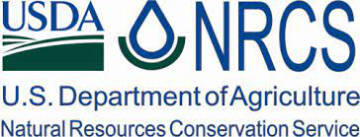In Alaska, growing a vegetable garden can be tricky. Our winters are long, and the summer tends to be cool and wet on the Kenai Peninsula, which can limit the species and production of the plants you grow. A quick internet search will give you dozens of ways you can do this: geodetic domes, high tunnels, low tunnels, caterpillar tunnel, tomato specific tunnels, greenhouses and so much more. The basic premise is they collect heat from the sun and warm the soil and plants during the day; they create a barrier from frosts; and they allow you to control the amount of water your plants receive. These types of systems are all over the peninsula, but the most common and visible by far is the high tunnel.
High tunnels generally come in kits that range in size. They have a metal frame and are a permanent structure designed to last for several years and fit your whole garden. They are at least 6 feet tall, but many are over 12 feet tall allowing for trellising of plants or even trees. Kits are covered in 6-mil plastic with add-ons like roll up sides and auto-vents. High tunnels require maintenance including repairing plastic and a plan for winter that includes either removing the snow or the plastic in the winter to prevent collapse of the frame.
Low tunnels are like a high tunnel but smaller in scale. They are less than 4 feet tall, use metal hoops, and each tunnel typical covers only one row of your garden. They also need to be anchored on the edges with sandbags or stakes. They are very flexible and can be moved multiple times throughout the season, for example protecting early greens then covering your tomato starts after the last frost to give them a jump start. There are multiple purposes for using a low tunnel, from season extension to pest protection to sun protection. If season extension is your goal, use a greenhouse plastic ranging from 4 to 8 mil. For pest protection from things like root maggots you can use a woven cloth-like material that is permeable, which allows rain in and offers some frost protection. A sun cloth is used to reduce the intensity of the sun, which can help greens that are prone to bolting hold off longer.
Interested in a high or low tunnel? The Natural Resource Conservation Service (NRCS) offers technical financial assistance to implement these practices and many others. A briefly summarized version of the process is as follows:
1. You will need to fill out forms that create USDA Farm Records for you as an individual and your land;
2. Plant a garden of the same size or bigger in the location you want a tunnel by July 1;
3. An NRCS conservation planner will come meet with you at your property;
4. You will develop a plan for application with your planner;
5. Complete additional paperwork;
6. An application will be submitted (funding timeline varies each year typical early winter);
7. If your application is funded, you will sign a final contract;
8. Install the planned practices; and
9. Receive financial assistance reimbursement
To start the process and learn all the details, stop by the NRCS Homer Field Office located at 432 east Pioneer St. in Homer or call 907-235-8177.
Emily MacDonald is a soil conservationist with the Natural Resources Conservation Service Homer Field Office. The Conservation Corner is monthly column with the USDA-NRCS Homer Office.


